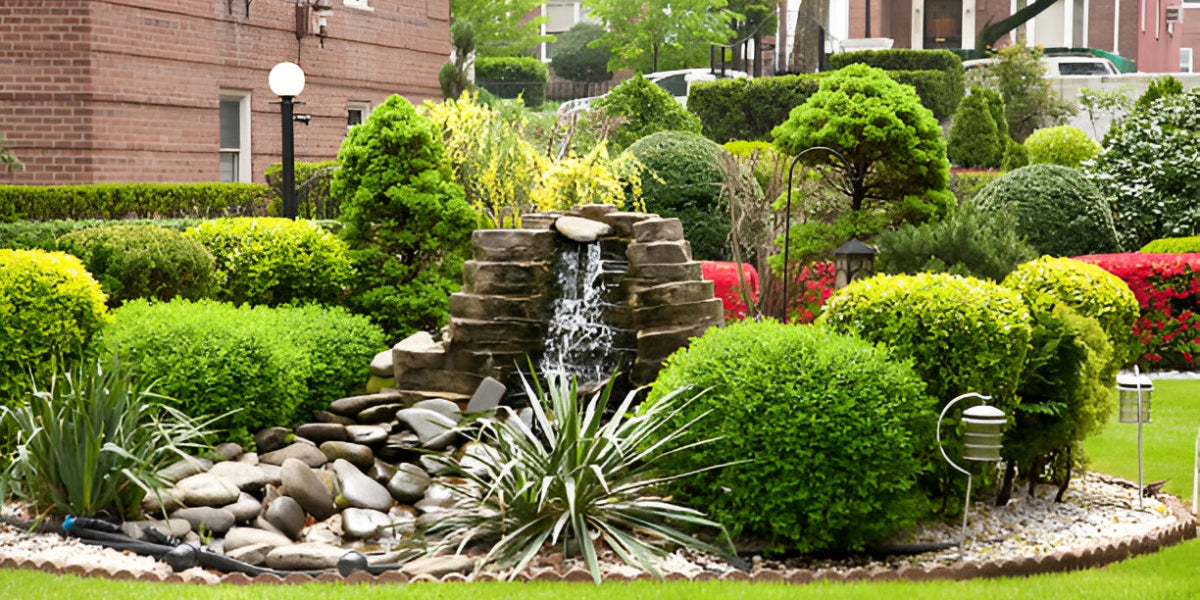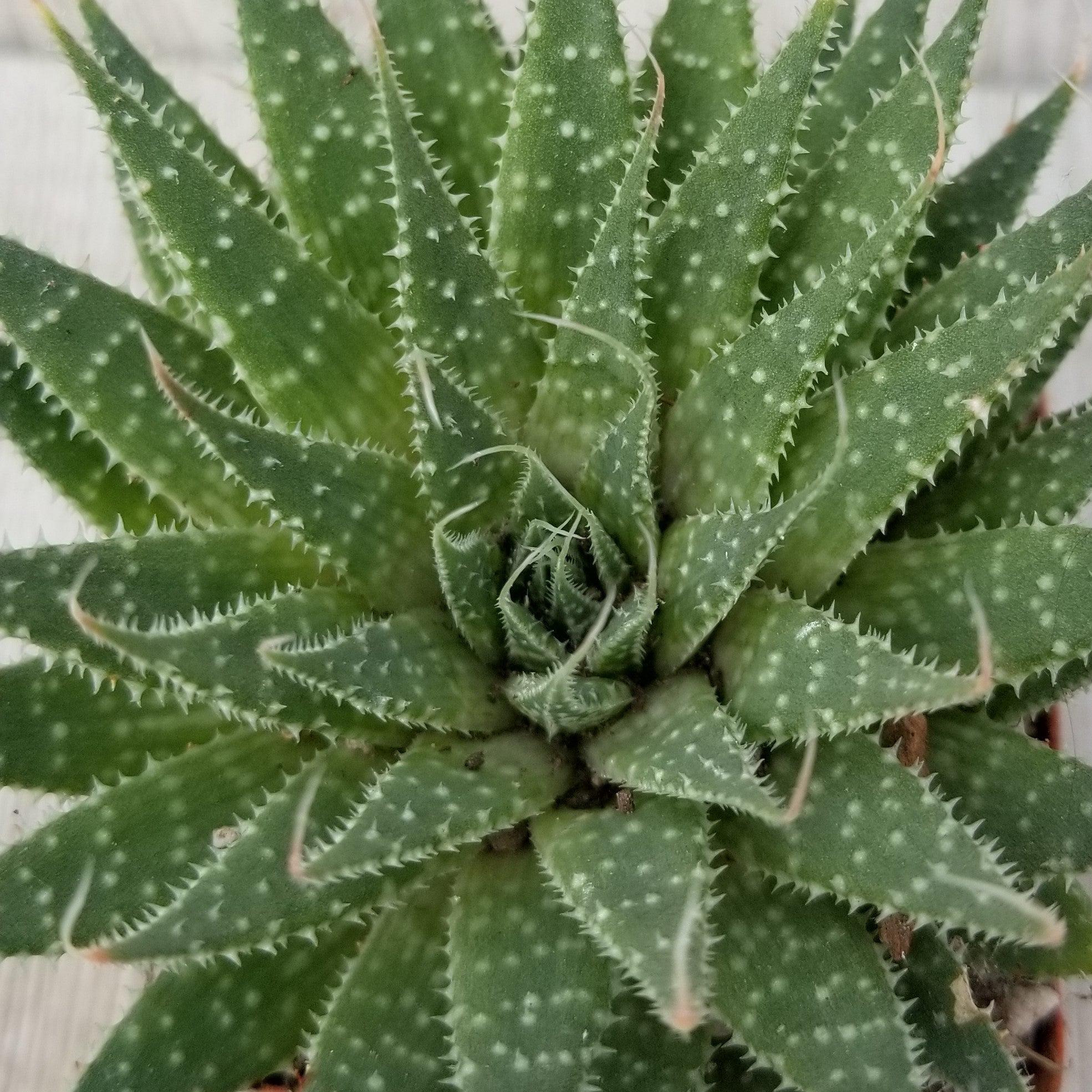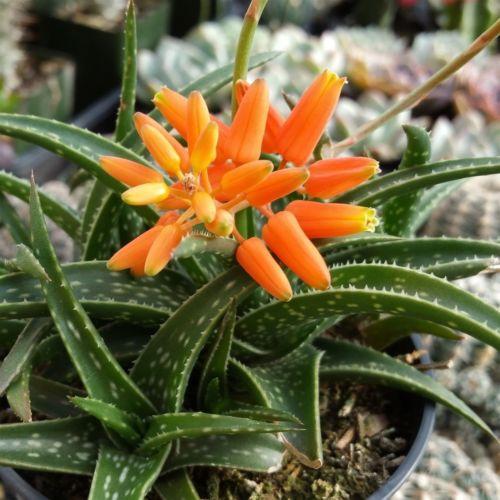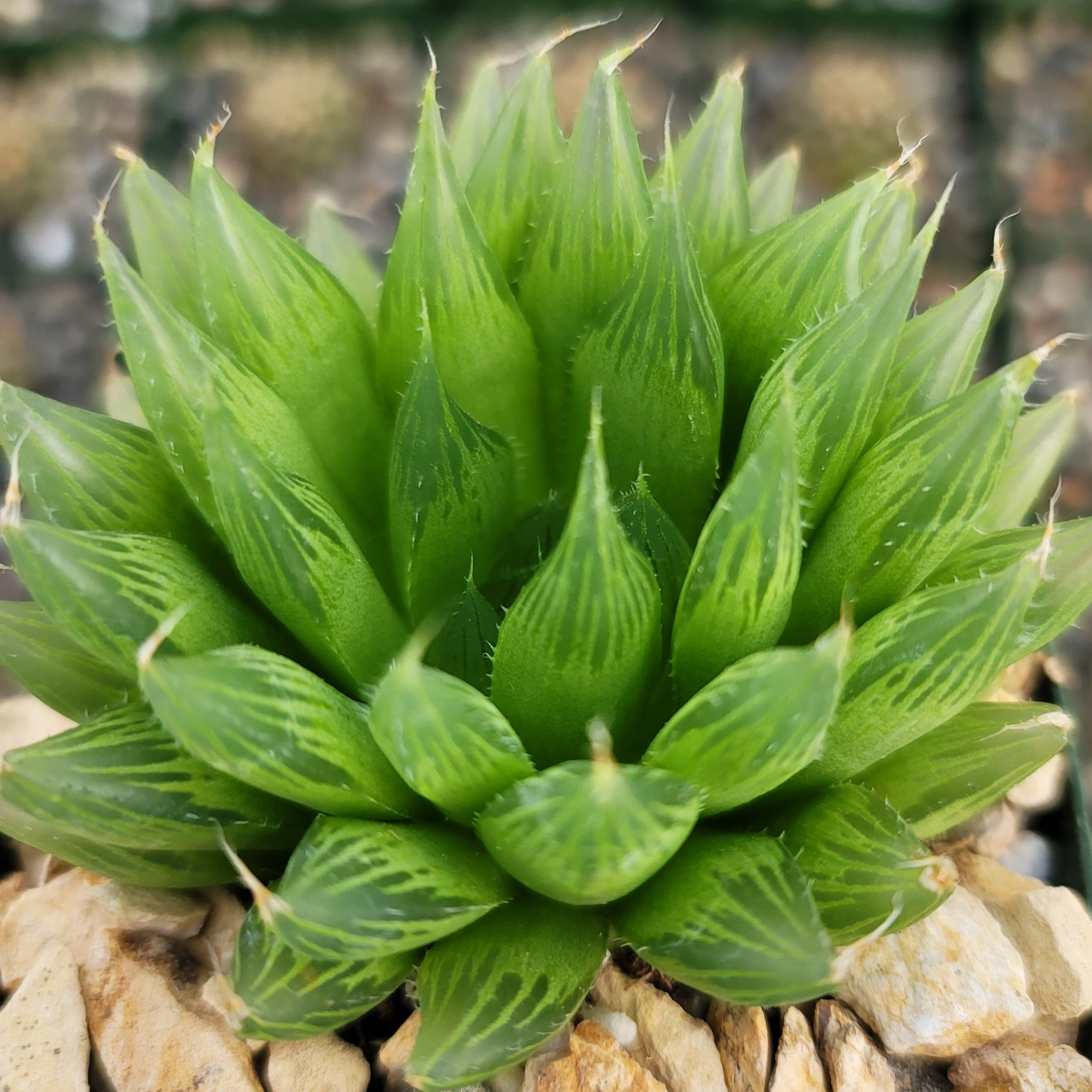Kalanchoe Plant Care, Varieties & Growing Guide – Everything You Need to Know!
Updated: January 28, 2025
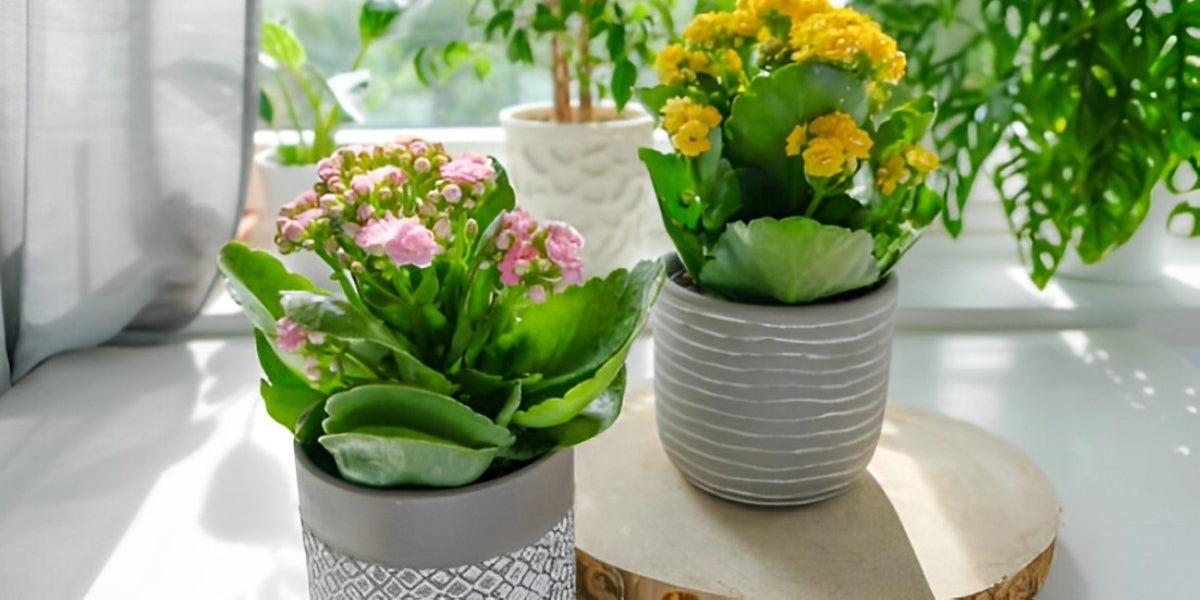
Kalanchoe is a popular houseplant cherished for its vibrant flowers, striking foliage, 200 vibrant varieties, and low-maintenance nature. The drought-tolerant Kalanchoe should be watered once every 10 days to two weeks when placed in ideal bright lighting.
In tropical and subtropical climates, Kalanchoe thrives outdoors as a perennial, while in colder regions, it is typically grown indoors. With the right Kalanchoe care, this adaptable succulent plant can rebloom indoors for decades, making it a favorite for both novice and experienced plant enthusiasts.
All About Kalanchoe Plant – Key Characteristics & Traits

Native to Madagascar, the Kalanchoe is a versatile and resilient succulent, also known as Widow’s Thrill.
The name "Kalanchoe" originates from the Chinese word kalan chau, meaning "that which falls and grows," inspired by species like Mother of thousands plant, which produce small plantlets along their leaf edges.
These plantlets detach and grow independently, showcasing the plant’s fascinating natural propagation method.
Beyond its practical uses, the Kalanchoe is admired for its adaptability, thriving both indoors as a potted houseplant and outdoors in warm, frost-free climates.
Kalanchoe plants are easily recognizable by their colorful, long-lasting flowers, thick, fleshy leaves that hold water, which are often scalloped or oval-shaped, and their robust stems, making them highly drought-tolerant.
With their compact size, slow-growing habit, and unique leaf textures, many Kalanchoes varieties are perfect for containers, rock gardens, or as striking focal points in mixed arrangements. Additionally, their intricate leaf patterns add visual interest even without blooms.
Their ability to thrive in various environments and their distinctive foliage make Kalanchoe a must-have for succulent enthusiasts and home gardeners alike. Additionally, Kalanchoe plant benefits include its ability to purify the air by removing toxins, improving concentration and productivity, and promote emotional well-being.
Blooming Kalanchoe Plant: How to Encourage Vibrant Flowers
Kalanchoe plants are renowned for their vibrant and long-lasting flowers, making them a favorite among houseplant enthusiasts and gardeners.

To bloom to its full potential, your kalanchoe plant should be placed somewhere where it receives at least 6 to 8 hours of bright light per day.
During the fall and winter, the plant should be in almost complete darkness for the rest of the day.
These plants typically bloom in clusters, with flowers forming at the tips of upright stems.
The blossoms come in a variety of striking colors, including shades of red, pink, yellow, orange, and white, often creating a stunning display that lasts several weeks or even months.
Their cheerful appearance makes them a popular choice for brightening indoor spaces or enhancing outdoor gardens in suitable climates.
How to Make a Kalanchoe Flower More Than Once a Year
Pro Tip:
One of the more challenging aspects of growing Kalanchoe is encouraging it to rebloom. These photoperiodic plants, also known as short-day plants, require extended periods of darkness to trigger bud formation. Indoors, this process can be controlled by placing the plant in a room that receives minimal light or covering it to simulate shorter days. To initiate blooming, aim for 14-16 hours of daily darkness for 4-6 weeks, providing the plant with some light but not complete darkness, as it still needs light for survival.
The above technique is primarily an indoor trick, as outdoor conditions cannot reliably replicate the controlled darkness needed. In outdoor settings (USDA zones 10–12), the natural day-night cycle may encourage blooming, with buds typically forming in winter or early spring. However, for consistent blooms throughout the year, the controlled indoor approach is more effective.
With proper care, this method ensures a year-round display of Kalanchoe’s vibrant flowers. The blooms are not just visually appealing but are also a testament to the plant’s resilience and ease of care. Unlike many flowering plants that require constant attention, Kalanchoe thrives with minimal watering and fertilization during its blooming phase. Removing spent flowers, a process known as deadheading, encourages the plant to redirect energy toward producing new blooms, ensuring a prolonged flowering season.
Kalanchoe Plant Care: Tips & Tricks
Kalanchoe plants are known for their stunning flowers and ease of care, making them a great addition to any home or office. With proper care, Kalanchoe plants can thrive and provide beautiful blooms for months to come. In this guide, we'll cover the basics of Kalanchoe plant care, including the best practices for watering, lighting, and fertilizing your plant.
Quick Reference

Bloom Season
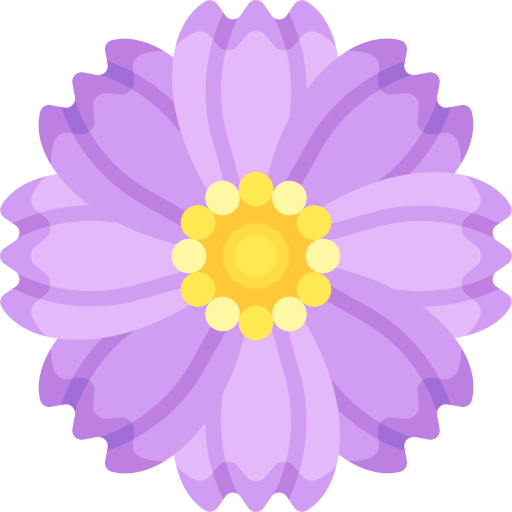
Flower Color

Growth Rate

Hardiness Zone

Mature Size

Plant Type

Sun Exposure

Resistance

Watering Needs
How to Water Kalanchoe Plants: A Beginner’s Guide
Kalanchoe succulents are drought-tolerant succulents that require infrequent watering, making them an excellent choice for plant owners seeking low-maintenance options. Overwatering is one of the most common issues with Kalanchoe, as their fleshy leaves are designed to store water, enabling them to survive extended dry periods. When watering, it’s essential to allow the soil to dry out completely between sessions to prevent root rot and other moisture-related problems. Always use a pot with drainage holes to ensure excess water can escape, keeping the roots healthy.
- In the spring and summer, during active blooming season, water sparingly but consistently, approximately once every 7–10 days, depending on the environment. Ensure the top inch of the soil is completely dry before watering again. Avoid getting water on the leaves and flowers to prevent fungal issues.
- In the fall and winter, during dormant periods, reduce watering frequency significantly, typically to once every 2–3 weeks. Keep the plant in a bright, dry area to mimic its natural habitat conditions. Watch for signs of underwatering, such as shriveled leaves, but err on the side of less water.
Understanding the Lighting Needs of Kalanchoe Plants
Kalanchoe plants thrive in bright, indirect light, which helps them maintain healthy foliage and produce vibrant blooms. While they can tolerate some direct sunlight, excessive exposure may scorch their leaves, particularly in the intense afternoon sun. For optimal growth and blooming, it's crucial to provide enough light while protecting the plant from extreme conditions.

- When growing indoors, place the Kalanchoe near a bright window that receives 6–8 hours of indirect sunlight daily. South- or east-facing windows are ideal to ensure enough light for blooming. Use grow lights if natural light is insufficient, especially during winter
- When growing Kalanchoe plants outside, choose a location with morning sun and afternoon shade, as direct afternoon sunlight can be too intense. Provide 4–6 hours of direct sunlight daily, especially in cooler climates.
- Note: Leggy stems are an indication that the plant is not getting enough light. Protect the plant from prolonged exposure to harsh midday sunlight to prevent leaf damage. Consider moving the plant to a location with brighter, indirect light to promote healthier growth. Additionally, rotate the plant regularly to ensure all sides receive adequate light.
Optimal Soil and Fertilizer for Your Kalanchoe Succulents
Kalanchoe succulent plants prefer well-draining soil that prevents water from pooling around their roots. A mix designed for succulents or cacti is ideal, as it mimics their natural growing conditions. Fertilization, though not always necessary, can enhance blooming and overall health if done appropriately.
- Use a well-drained succulent mix that provides excellent drainage. Instead, make or buy a well-draining potting mix, or ideally use our specialized succulent potting mix that contains 5 natural substrates and mycorrhizae to promote the development of a strong root system that helps your succulent to thrive. Ensure the pot has drainage holes to avoid root rot.
- During the active growing and blooming season, apply a balanced, water-soluble NPK fertilizer once a year. Avoid fertilizing during the dormant period, as the plant requires fewer nutrients. Opt for an NPK fertilizer with a higher phosphorus (5-10-5) content to encourage more robust flowering.
Kalanchoe Hardiness Zone Map and Ideal Temperature
Kalanchoe plant is a warm-weather plant that thrives best in temperatures ranging from 55°F to 80°F with low humidity. While they are adaptable indoors and outdoors, providing the right environmental conditions ensures their longevity and vitality.
When grown indoors, maintain temperatures between 60–75°F for optimal growth. Avoid placing the plant near drafts, heating vents, or air conditioners that cause temperature fluctuations. Humidity should remain low to moderate; avoid misting the plant as excessive moisture can lead to fungal problems.

In the United States, this is mostly an indoor plant, but if you live in southern Florida or Hawaii then you can cultivate it outdoors in USDA zones 9-12.
Protect the plant from frost, as freezing temperatures can damage or kill it.
Outdoor humidity levels should be low to moderate; ensure the plant is in a well-ventilated area to prevent excess moisture buildup.
(More on Kalanchoe Plant Care after our top 10 plant recommendations...)
Our Top 10 Kalanchoe Plant Varieties
With over 200 known species of kalanchoe plants, they offer a wide range of options for both indoor and outdoor settings. These plants come in various shapes, sizes, and colors, making them versatile choices to complement any style or preference. Below you will find the top 10 most popular types of kalanchoe plants, perfect for adding a touch of natural beauty to your space with minimal effort required.

1
Mother of Thousands Plant (Kalanchoe laetivirens)
BUY AT PLANET DESERTkeypoints:
- USDA Hardiness Zones: 9, 10, 11
- Resistance: Extremely drought-tolerant, deer-resistant, heat-tolerant
- Mature Size: 3 ft. tall, 2 ft. wide
- Bloom Color: Pinkish grey
The Mother of Thousands Plant is a fascinating and most popular succulent renowned for its unique ability to produce plantlets along the edges of its thick, blue-green leaves. These miniature plants eventually drop off and root wherever they land, making propagation effortless and captivating to observe. Its leaves often have a slightly purplish hue under bright light, adding depth and color to its appearance. The Mother of Thousands thrives in bright, indirect light and requires little watering, making it an excellent low-maintenance choice for both new and experienced gardeners. This plant is particularly appealing for creative succulent arrangements or as a standalone specimen, offering an intriguing visual element to any indoor or outdoor garden. Learn more...

2
Mother of Millions Plant (Kalanchoe delagoensis)
BUY AT PLANET DESERTkeypoints:
- USDA Hardiness Zones: 9, 10, 11
- Resistance: Extremely drought-tolerant, deer-resistant, heat-tolerant
- Mature Size: 5 ft. tall
- Bloom Color: Orange red-pinkish red-pale pink
The Mother of Millions Plant is a slender, upright Kalanchoe succulent that lives up to its name with its extraordinary ability to propagate. Its narrow, tubular leaves are adorned with rows of tiny plantlets along their edges, which readily fall and take root. These leaves often display a unique combination of green, gray, and bronze tones, adding elegance and interest to the plant’s overall appearance. This plant is perfect for sunny outdoor spaces or well-lit indoor areas, requiring very little care to flourish. Known for its rapid growth and resilience in arid conditions, the mother of millions is a fantastic choice for gardeners who love dramatic, statement-making plants. Learn more...

3
Flaming Katy (Kalanchoe blossfeldiana)
keypoints:
- USDA Hardiness Zones: 10, 11, 12
- Resistance: Extremely drought-tolerant, deer-resistant, heat-tolerant, pest resistant
- Mature Size: 18 in. tall, 18 in. wide
- Bloom Color: Yellow, pink, red, white
The Kalanchoe blossfeldiana, often referred to as the Flaming Katy or Christmas Kalanchoe, is a captivating plant known for its vibrant clusters of long-lasting flowers. With its cheerful blooms available in shades of red, pink, yellow, orange, and white, this plant adds a burst of color to any space. Its thick, glossy green leaves not only complement the flowers but also make them a standout even when not in bloom. This succulent is beloved for its ability to flower during the colder months, making it a favorite choice for brightening up homes and gardens during the winter season. Its compact size and stunning display make it ideal for tabletops, windowsills, and gift-giving occasions. Whether you’re looking to enhance your home’s décor, create an eye-catching centerpiece, or simply enjoy its vibrant blooms, the Flaming Katy is a reliable and rewarding addition to your plant collection. Its charm, resilience, and beauty make it a perfect choice for both novice and seasoned plant enthusiasts.

4
Panda Plant 'Kalanchoe tomentosa'
BUY AT PLANET DESERTkeypoints:
- USDA Hardiness Zones: 10, 11
- Resistance: Extremely drought-tolerant, deer-resistant, heat-tolerant
- Mature Size: 3 ft. tall, 3 ft. wide
- Bloom Color: Yellow, green
The Panda Plant is a compact and charming succulent, loved for its fuzzy, silvery-green leaves that are edged with chocolate-brown tips. The velvety texture of the leaves adds a tactile appeal, making this plant as delightful to touch as it is to look at. Its soft, rounded leaves grow in clusters, creating a lush and inviting appearance. Requiring bright, indirect light and infrequent watering, the Panda Plant is a perfect choice for homes and offices. Its endearing features and easy care make it an excellent gift or addition to any plant collection, bringing a touch of whimsy to your space. Learn more...

5
Flapjack Plant ‘Kalanchoe luciae’
BUY AT PLANET DESERTkeypoints:
- USDA Hardiness Zones: 9, 10, 11
- Resistance: Extremely drought-tolerant, deer-resistant, heat-tolerant
- Mature Size: 2 ft. tall, 2 ft. wide
- Bloom Color: Pale yellow, gray
The Flapjack Plant is a bold and visually striking succulent with large, rounded leaves arranged in a rosette. The leaves transition from a cool green to fiery red at the edges when exposed to bright sunlight, creating a vibrant, eye-catching display. The Flapjack Plant is ideal for xeriscapes or as a focal point in container gardens, and it thrives in full sun or bright indoor lighting. Its dramatic coloring and architectural shape make it a favorite among gardeners and decorators looking for a standout feature in their plant collections. Learn more...

6
Copper Spoons (Kalanchoe orgyalis)
BUY AT PLANET DESERTkeypoints:
- USDA Hardiness Zones: 9, 10, 11
- Resistance: Extremely drought-tolerant, deer-resistant, heat-tolerant
- Mature Size: 6 ft. tall, 6 ft. wide
- Bloom Color: Yellow
The Copper Spoons plant is a unique and striking succulent with spoon-shaped leaves covered in a velvety, copper-colored coating. The underside of the leaves is silvery-gray, creating a fascinating two-tone effect that adds texture and depth to any arrangement. Over time, this plant develops a bushy, shrub-like growth habit. This drought-tolerant plant is ideal for sunny windowsills or outdoor rock gardens. It’s warm, metallic hues and distinct shape make it a standout choice for adding visual interest to succulent collections or minimalist décor. Learn more...

7
Penwiper Plant (Kalanchoe marmorata)
BUY AT PLANET DESERTkeypoints:
- USDA Hardiness Zones: 10, 11
- Resistance: Extremely drought-tolerant, deer-resistant, heat-tolerant
- Mature Size: 18 in. tall (can grow taller to 4 ft)
- Bloom Color: White, off-white
The Kalanchoe marmorata is an elegant succulent characterized by its large, fleshy leaves adorned with striking dark purple blotches. These patterns resemble ink stains, giving the plant its unique name. The leaves are thick and oval-shaped, creating a sculptural look that pairs beautifully with modern or minimalist designs. The Penwiper Plant grows best in bright light and well-drained soil and requires little care. Its intriguing appearance and subtle color palette make it a sophisticated addition to both indoor arrangements and outdoor succulent gardens. Learn more...

8
Pink Mother of Thousands Plant (Kalanchoe ‘Pink Butterflies’)
BUY AT PLANET DESERTkeypoints:
- USDA Hardiness Zones: 9, 10, 11
- Resistance: Extremely drought-tolerant, deer-resistant, heat-tolerant
- Mature Size: 3 ft. tall
- Bloom Color: Pink
The Pink Mother of Thousands is a rare and captivating variety with bright pink plantlets that line their slender, green leaves. Unlike other Mother of Thousands of varieties, these vibrant plantlets resemble delicate butterflies, creating a breathtakingly beautiful effect. This plant thrives in bright, indirect light and requires little water, making it an excellent choice for collectors and gardeners seeking something truly unique. Its vivid colors and enchanting form make it a perfect statement piece in any space. Learn more...

9
Chocolate Soldier Plant – Kalanchoe tomentosa ‘Chocolate Soldier’
BUY AT PLANET DESERTkeypoints:
- USDA Hardiness Zones: 9, 10, 11
- Resistance: Extremely drought-tolerant, deer-resistant, heat-tolerant
- Mature Size: 2.5 ft. tall, 2 ft. wide
- Bloom Color: Red, Yellow
The Chocolate Soldier Plant is a charming variety of the Panda Plant, featuring soft, silvery-green leaves with prominent chocolate-brown edges. The leaves grow in tight clusters, forming a compact and visually appealing plant that fits well in small pots or succulent arrangements. With its low water needs and preference for bright, indirect light, the Chocolate Soldier is both decorative and functional. Its unique coloring and fuzzy texture make it a delightful addition to any indoor plant collection. Learn more...

10
Desert Sunrise Plant (Kalanchoe humilis)
BUY AT PLANET DESERTkeypoints:
- USDA Hardiness Zones: 8, 9, 10, 11
- Resistance: Extremely drought-tolerant, deer-resistant, heat-tolerant
- Mature Size: 3 ft. tall
- Bloom Color: Dull purple, green
The Desert Sunrise Plant is a stunning succulent with beautifully variegated leaves in shades of green, purple, and red. The leaves are arranged in a rosette, and their vibrant colors intensify in bright sunlight, resembling a breathtaking desert sunset. This compact plant is perfect for both indoor displays and outdoor rock gardens. Its ability to thrive in challenging conditions and its striking coloration make it a favorite for adding a warm, inviting touch to any collection. Learn more...
Potting and Repotting Kalanchoe Plants: A Step-by-Step Guide
When potting a Kalanchoe succulent plant, selecting the right container and soil mix is essential for its health and growth. Use a pot with drainage holes to prevent waterlogging, as these succulents are highly susceptible to root rot. A succulent soil mix ensures proper drainage and aeration. Kalanchoe plants thrive in snug containers, as slightly restricted root space encourages blooming. Over time, however, they may outgrow their pots or require fresh soil to maintain optimal health.
Repot Kalanchoe every 2–3 years or when the roots outgrow the current pot. Repot in spring, just before the active growing season begins. Select a new pot that is 1–2 inches larger in diameter than the current one to prevent overwatering risks. Ensure it has adequate drainage holes.
- Gently remove the plant from its current pot, being careful not to damage the roots.
- Shake off excess old soil and check for any signs of root rot or pests. Trim damaged roots if necessary.
- Fill the new pot with fresh succulent or cactus soil, place the plant, and backfill around the roots.
- Water lightly after repotting and allow the soil to dry out before watering again.

How to Prune Kalanchoe Plants for Maximum Blooms
Prune your Kalanchoe during its active growing season typically in spring to early summer to promote recovery and robust growth. After pruning, avoid overwatering and provide bright, indirect light to support healthy regeneration.
Pruning is an essential part of maintaining a healthy and attractive Kalanchoe plant. Regular pruning helps control its size, remove dead or damaged leaves, and encourage fuller, bushier growth. After the blooming period, spent flower stalks should be trimmed back to the base to redirect the plant’s energy toward new growth and future blooms. Additionally, removing any yellowing or unhealthy foliage helps prevent the spread of disease and keeps the plant looking vibrant.
When pruning, always use clean, sharp scissors or pruning shears to make clean cuts. For plants growing indoors, pinching back leggy stems can help maintain a compact and aesthetically pleasing shape. Avoid excessive pruning, as this can stress the plant.
How to Propagate Kalanchoe Plants: A Comprehensive Guide to Leaf, Stem, & Offshoots Propagation
Kalanchoe plants are among the easiest succulents to propagate, making them a favorite for gardeners and plant lovers who want to create more plants for their collection or to share. These hardy plants can be propagated using a variety of methods, including leaf cuttings, stem cuttings, and dividing offshoots. Each method has its unique advantages and works well depending on the plant’s condition and your preferences. The ideal time for propagation is during the active growing season, usually in spring or early summer, when the plant’s energy is focused on new growth. Regardless of the method chosen, ensure the cuttings or divisions are handled carefully, allowed to be callous over to prevent rot, and placed in well-draining soil for the best results.
Leaf Cuttings
- Select a healthy stem with several leaves, preferably 4–6 inches long. Cut the stem just below a node, where leaves attach to the stem, using sharp, sterilized scissors or a knife.
- Remove the lower leaves from the stem, leaving 2–3 at the top. Allow the cut end to dry and callous for 1–2 days.
- Plant the stem cutting in well-draining succulent or cactus soil, inserting it deep enough to stand upright.
- Place the pot in a warm, bright area with indirect light. Water sparingly, keeping the soil slightly moist but not wet. Roots typically develop within 2–3 weeks, after which you can reduce watering further.
Offshoots and Division
- Look for offshoots or baby plants growing at the base of the parent Kalanchoe. These offshoots are usually easy to identify and often already have small roots.
- Gently separate the offshoots from the parent plant using your hands or a clean knife, ensuring you retain as much of the root system as possible.
- If dividing a larger plant, remove it from its pot, gently shake off excess soil, and carefully separate the root ball into smaller sections.
- Replant the offshoots or divisions in individual pots filled with succulent soil. Water lightly to help them establish, and place them in bright, indirect light.

Plantlets
- Keep an eye on the soil around your Kalanchoe plant like Mother of millions or Mother of thousands, as mature plantlets often drop off on their own. These plantlets usually have small roots ready for growth.
- Use a well-draining soil mix, such as a combination of succulent soil and perlite, to prevent water retention and root rot.
- Gently lay the fallen plantlets on the surface of the prepared soil. Ensure the roots, if visible, are in contact with the soil for better anchoring.
- Mist the soil lightly to provide moisture, but avoid overwatering, as plantlets are prone to rot when too wet.
- Place the pot in a location with bright, indirect sunlight to encourage growth. Avoid direct sunlight that could dry out or scorch the plantlets.
- Over time, the plantlets will establish roots and begin growing. Once they are stable and show noticeable growth, they can be transplanted to individual containers if needed.
Common Pests and Problems with Growing Kalanchoe
Kalanchoe succulents are generally resistant to pests and diseases, making them a low-maintenance choice for indoor and outdoor gardening. However, like any succulents, they can occasionally face challenges if grown in unfavorable conditions. Common issues often arise from overwatering, improper lighting, or neglect, leading to pests such as mealybugs or aphids and various plant health concerns. Identifying and addressing these problems early will help maintain the plant’s health and beauty.

- Mushy or Discolored Blooms and Leaves: Near-freezing temperatures can cause damaged leaves or stunted blooms in plants, so it's crucial to maintain them above 50°F for optimal performance. Remove affected parts and adjust watering habits to keep the plant dry.
- Drooping or Limp Growth: High temperatures can cause leaves to wilt, so it's best to keep plants below 80°F to prevent this issue. Check the soil moisture and adjust watering accordingly to restore vitality.
- Rotting Roots: This occurs due to waterlogged soil and poor drainage. Repot the plant in fresh, well-draining soil and reduce watering frequency to prevent further damage.
- Pale or Scorched Leaves: Light exposure is crucial for plant health, with too little causing glossy green leaves and too much direct sunlight causing burned ones. Move the plant to a location with bright, indirect light to restore its color and vibrancy. Indoor kalanchoes thrive in bright indirect light but not too much direct sunlight.
- Failure to Bloom: Usually due to inadequate light or incorrect fertilization. Kalanchoes often fail to bloom due to a lack of winter darkness, which is a six-week period of 14 hours of nighttime darkness each day. Without this reset period, the plant fails to re-bloom. Ensure the plant receives 6–8 hours of light daily and feed it with a balanced fertilizer during the growing season.
- Weak and Soft Stems: Kalanchoe plants often suffer from root and stem rot due to overwatering or planting in water-holding soil. If this issue begins, withhold water until the plant recovers.
Where to Buy Kalanchoe Plants?
When it comes to buying Kalanchoe succulent plants, unless you have a local nursery that specializes in cactus and succulents; then you may have a hard time finding Kalanchoe plants near you.
Most of the types of Kalanchoe Plants listed above are all available at Planet Desert. You can just click the buy link on any of the plants on our list above, or feel free to explore more types of Kalanchoe plants here.
We have the world's largest selection of Cactus & Succulents that can be shipped anywhere in the United States and are guaranteed to arrive happy & healthy.
Kalanchoe Plants Quick Growing Reference Guide
| Bloom Season | Late fall to early spring |
|---|---|
| Botanical Name | Kalanchoe spp. |
| Common Name | Widow’s thrill, Christmas kalanchoe, Chandelier Plant |
| Dormancy | Winter |
| Family | Asparagaceae |
| Flower Color | Pink, Red, Yellow, White |
| Genus | Kalanchoe |
| Growth Habit | Upright, Branched |
| Growth Rate | Slow to Moderate |
| Hardiness Zone | 9, 10, 11, 12 |
| Mature Size | 18 in. tall, 18 in. wide |
| Native Area | Africa (Madagascar) |
| Plant Type | Perennial Succulent |
| Propagation | By leaf cuttings, stem cuttings, offshoots |
| Resistance | Extremely Drought tolerant, heat tolerant, pest resistant |
| Soil PH | 6.5, Acidic, Neutral |
| Soil Type | Succulent potting mix soil |
| Special Features | Easy to grow, Air purifying plant |
| Sun Exposure | Full sun, partial shade |
| Toxicity | Mildly toxic to humans, mildly toxic to pets (Keep away from children) |
| Watering Needs | Low |
The Bottom Line
Overall, the Kalanchoe plant is a versatile and stunning addition to any plant collection, celebrated for its vibrant blooms, unique foliage, and remarkable ease of care. With a variety of shapes, sizes, and colors to choose from, Kalanchoe offers something for every gardener, whether you prefer the lush, velvety leaves of the Panda Plant or the striking, architectural form of the Flapjack Plant. Its drought tolerance and ability to thrive in a range of light conditions make it a reliable choice for both novice and experienced gardeners. Beyond its aesthetic appeal, Kalanchoe is a resilient plant, capable of reblooming with proper care and adding life to your indoor or outdoor spaces year-round.
When it comes to care, the Kalanchoe is low-maintenance, as it requires minimal watering, well-drained soil, and bright, indirect sunlight. Seasonal adjustments, such as reducing watering during dormant periods and ensuring proper humidity levels, will keep the plant thriving. Fertilizing during the growing season and repotting, when necessary, further ensures its health and longevity. Whether grown indoors or outdoors, Kalanchoe is a rewarding plant that brings beauty, resilience, and a touch of nature's artistry to any environment. With the right care, this beloved succulent will flourish and provide years of joy.
Frequently Asked Questions
-
Why isn’t my Kalanchoe blooming?
Kalanchoe succulent plants may not bloom due to several reasons:
- Insufficient Light: This plant requires bright, indirect sunlight during the growing season and at least 14 hours of darkness daily for 6-8 weeks to trigger blooming. It's important to provide the plant with a period of low light, but not complete darkness, as it still needs some light to survive.
- Inadequate Watering: Overwatering or underwatering can cause stress, leading to a lack of blooms.
- Fertilization: Kalanchoe plants require balanced fertilization to promote blooming.
- Temperature: Kalanchoe plants prefer daytime temperatures between 65-75°F and nighttime temperatures around 55-65°F.
- Potting Mix: Using a well-draining potting mix can help prevent waterlogged soil, which can inhibit blooming.
-
How to care for a Kalanchoe plant?
- Kalanchoe plants thrive in well-draining succulent soil that mimics their natural arid environment.
- Kalanchoe succulents require bright, indirect light for healthy growth. Indoors, place the plant near a sunny window that receives several hours of sunlight daily. Outdoors, provide filtered sunlight or partial shade, especially in hot climates, to prevent leaf scorching.
- Water your Kalanchoe sparingly, allowing the soil to dry out completely between waterings. Overwatering can lead to root rot, while underwatering can cause the leaves to wilt. During winter, reduce watering further as the plant enters dormancy.
- When growing indoors, Kalanchoe plants prefer temperatures between 60°F and 85°F.
- Kalanchoe plants can be grown outdoors year-round in USDA zones 10–12. In colder climates, bring them indoors during frost or winter months to protect them from freezing temperatures.
- Feed your Kalanchoe with a balanced, water-soluble NPK fertilizer once a year in the spring during the growing season.
-
How do I revive a wilting Kalanchoe plant?
To revive a wilting Kalanchoe, first identify the cause. Overwatering often leads to root rot, while underwatering causes dehydration. Check the soil’s moisture level—if it's soggy, allow it to dry out and improve drainage. If the plant is too dry, water it deeply but avoid waterlogging. Ensure the plant is in bright, indirect light, and consider trimming damaged leaves or stems to encourage healthy new growth.
-
Are Kalanchoe plants poisonous to cats and dogs?
Yes, according to the ASPCA, the Kalanchoe plants are mildly toxic to cats and dogs. They contain compounds called bufadienolides, which can cause symptoms like vomiting, diarrhea, and lethargy if ingested in a large amount. But it's safe to touch and handle the plant as long as the pet does not ingest it.
-
Is Kalanchoe an indoor or outdoor plant?
Kalanchoe can be grown both indoors and outdoors. As a houseplant, it thrives in bright, indirect sunlight with temperatures between 65-75°F. Outdoors, it can be grown as a perennial in warm, frost-free climates (USDA zones 9-11) or as an annual in colder regions. If grown indoors, you can encourage the plant to bloom more than once a year by providing the right care and light conditions. Its versatility makes it an excellent choice for a variety of settings.
-
Does Kalanchoe come back every year?
In tropical and subtropical climates, Kalanchoe is a perennial and comes back every year with proper care. In colder climates, it is typically grown as an annual or kept indoors during the winter months. Providing it with a stable environment and care ensures longevity.
-
Does Kalanchoe need sun or shade?
Kalanchoe plants require bright, indirect light for healthy growth and vibrant blooms. When growing indoors, place them near 6-8 hours of indirect sunlight, while outdoor cultivation requires 4-6 hours of direct sunlight. Use grow lights if natural light is insufficient. Protect the plant from harsh midday sunlight to prevent leaf damage.



